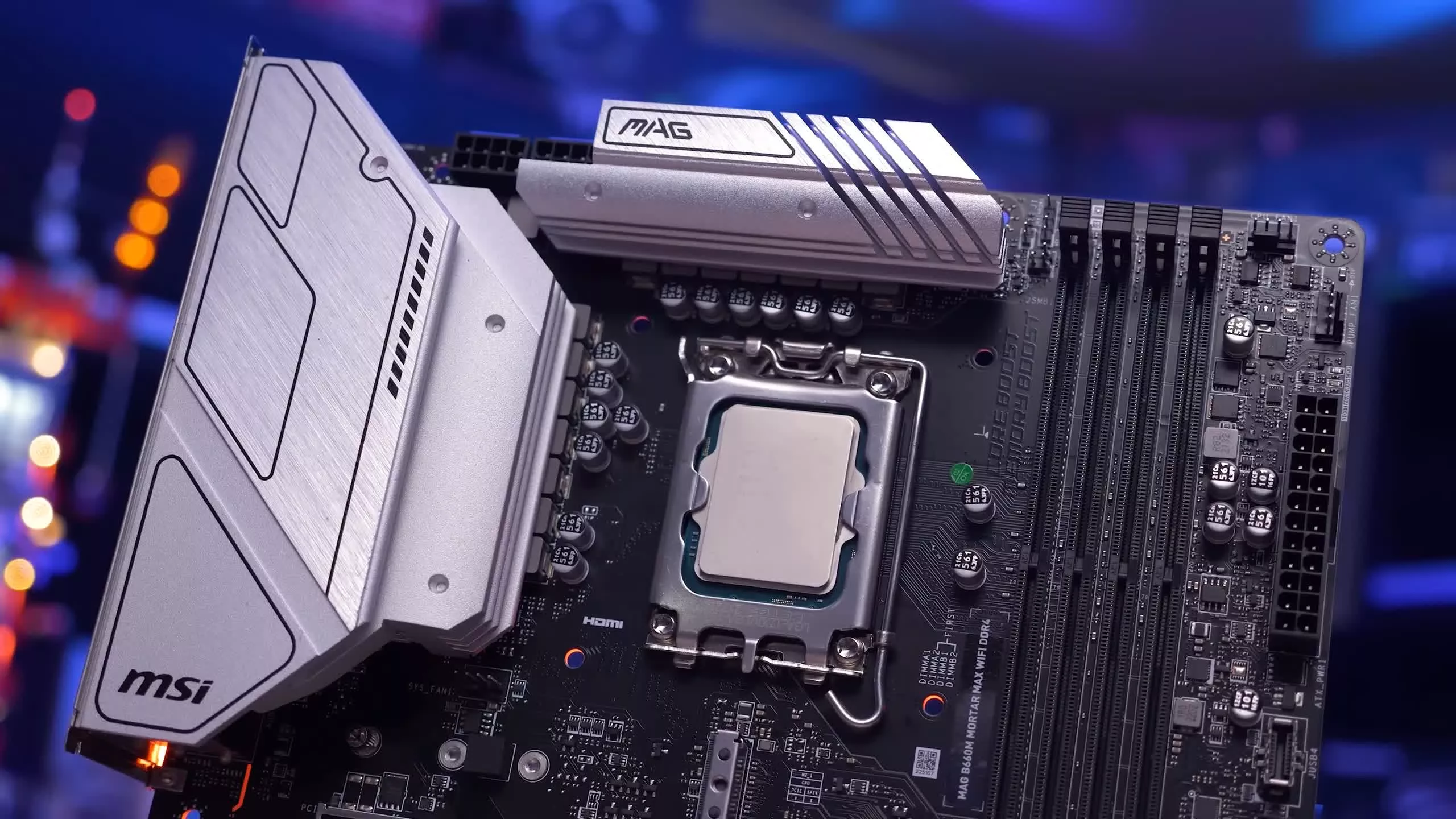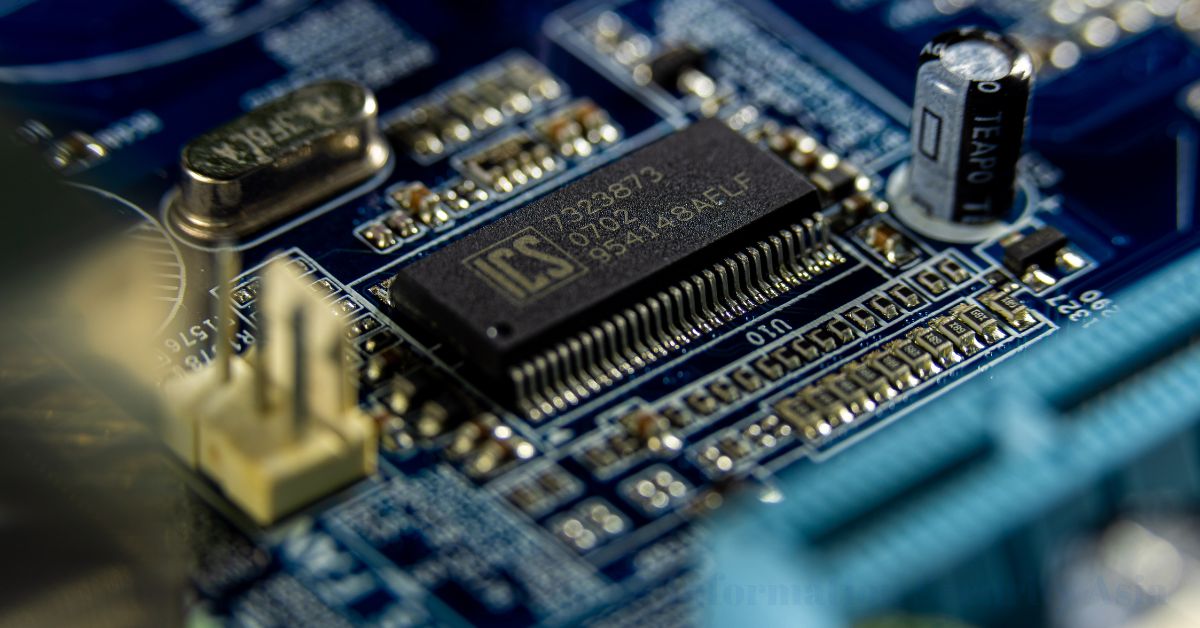In the world of computer hardware, there is a term that often gets thrown around – bottleneck. But what exactly does it mean and how does it affect your computer’s performance?
In simple terms, a bottleneck occurs when one component in your system becomes the limiting factor in overall performance. This can happen for various reasons, but one question that often arises is whether a motherboard can be the cause of a bottleneck for the CPU.
In this article, we will explore the relationship between the motherboard and CPU, and determine if a motherboard can indeed bottleneck a CPU.
Contents
- What Is a Bottleneck in Computer Hardware?
- Understanding the Relationship Between Motherboard and CPU
- Can a Motherboard Affect CPU Performance?
- How to Identify a Bottleneck in Your System
- Factors that Can Cause a Bottleneck in Your Computer
- The Impact of A Bottleneck on Overall System Performance
- How to Prevent a Bottleneck in Your Computer
- Common Signs of A CPU Bottleneck
- How to Upgrade Your Motherboard to Avoid a Bottleneck
- The Importance of Choosing Compatible Components for Your Computer
- Video
- Conclusion
What Is a Bottleneck in Computer Hardware?

A bottleneck in computer hardware refers to a situation where one component in the system is significantly slower than the others, causing the overall performance of the system to be limited by that component. This can happen for a variety of reasons, such as using an outdated processor, a low-performance graphics card, or insufficient RAM.
When a bottleneck occurs, the system’s performance suffers, and users may experience slowdowns, lag, or even crashes.
To understand how a bottleneck can occur, let’s take a closer look at the relationship between the motherboard and CPU.
Understanding the Relationship Between Motherboard and CPU

The motherboard is the central component of a computer system, responsible for connecting all the other components, including the CPU, RAM, graphics card, storage drives, and other peripherals. It acts as a communication hub, allowing data to flow between different components and ensuring the smooth operation of the system.
On the other hand, the CPU, or central processing unit, is the brain of the computer, responsible for executing instructions and carrying out computations. It is the most crucial component in determining the speed and performance of a computer. The CPU works closely with the motherboard to ensure that all tasks are carried out efficiently.
The motherboard provides the CPU with the necessary power and data pathways, while the CPU carries out the processing tasks required by the user. This symbiotic relationship between the two components is essential for the proper functioning of a computer system.
Can a Motherboard Affect CPU Performance?
Now that we understand the role of the motherboard and CPU, the question remains – can a motherboard bottleneck a cpu? The answer is yes, but it’s not as straightforward as it may seem.
A motherboard can affect CPU performance in several ways. One of the most common reasons is using an incompatible motherboard with a high-performance CPU. For example, if you have a powerful CPU but pair it with an outdated or low-quality motherboard, the motherboard may not be able to handle the demands of the CPU, resulting in a bottleneck.
Another factor that can affect CPU performance is the chipset on the motherboard. The chipset acts as a bridge between the CPU and other components, and a low-quality or outdated chipset can significantly impact the overall performance of the system.
Furthermore, the number and speed of the PCIe lanes on the motherboard can also affect the CPU’s performance. PCIe lanes are responsible for data transfer between the CPU and other components, such as the graphics card. If the motherboard has limited PCIe lanes or they are not running at their full speed, it can cause a bottleneck for the CPU.
How to Identify a Bottleneck in Your System
If you suspect that your system may be experiencing a bottleneck, there are a few ways to identify it. One of the most common signs of a bottleneck is when your CPU usage is consistently at 100% while performing simple tasks. This indicates that the CPU is struggling to keep up with the demands of the system.
You can also use benchmarking tools to measure the performance of your system and compare it to similar systems. If your system is underperforming compared to others with similar specifications, it could be a sign of a bottleneck.
Another way to identify a bottleneck is by monitoring the temperatures of your components. If your CPU is running at high temperatures, it could be a sign that it is working harder than it should due to a bottleneck.
Factors that Can Cause a Bottleneck in Your Computer
Apart from using an incompatible motherboard or chipset, there are other factors that can cause a bottleneck in your computer. These include:
- Insufficient RAM: If your system does not have enough RAM to handle the demands of your CPU, it can result in a bottleneck.
- Outdated drivers: Drivers act as a bridge between the hardware and software, and outdated drivers can significantly impact the performance of your system.
- Overclocking: While overclocking can improve the performance of your system, it can also cause a bottleneck if not done correctly. Overclocking the CPU without ensuring that the motherboard and other components can handle the increased speed can lead to a bottleneck.
- Poor airflow: Inadequate cooling in your system can cause components to overheat, resulting in reduced performance and potential bottlenecks.
The Impact of A Bottleneck on Overall System Performance
A bottleneck in any component can significantly impact the overall performance of your system. When one component is struggling to keep up with the demands of the system, it can cause delays and slowdowns, affecting the user experience.
For example, if your graphics card is the bottleneck, you may experience lag or low frame rates while gaming. Similarly, if your CPU is the bottleneck, you may experience slow loading times and delays while performing tasks.
In extreme cases, a bottleneck can even cause the system to crash or freeze, leading to data loss and potential damage to the hardware.
How to Prevent a Bottleneck in Your Computer
Preventing a bottleneck in your computer starts with choosing compatible components for your system. When building or upgrading your computer, make sure to research and choose a motherboard that can handle the demands of your CPU.
Additionally, ensure that your motherboard has a high-quality chipset and sufficient PCIe lanes to support your CPU and other components. It is also crucial to have enough RAM to handle the workload of your system.
Regularly updating your drivers and ensuring proper airflow in your system can also help prevent bottlenecks. And if you are overclocking your CPU, make sure to do it correctly and monitor the temperatures to avoid any potential bottlenecks.
Common Signs of A CPU Bottleneck
While we have discussed some signs of a bottleneck in general, here are some specific signs that indicate a CPU bottleneck:
- High CPU usage: As mentioned earlier, if your CPU usage is consistently at 100%, it could be a sign of a bottleneck.
- Slow loading times: If your system takes a long time to boot up or load applications, it could be due to a CPU bottleneck.
- Low frame rates: If you experience low frame rates while gaming or performing graphics-intensive tasks, it could be a sign of a CPU bottleneck.
- Delayed response: If there is a noticeable delay between clicking on something and the action being carried out, it could be due to a CPU bottleneck.
How to Upgrade Your Motherboard to Avoid a Bottleneck
If you have identified a bottleneck in your system and determined that it is due to an incompatible or low-quality motherboard, you may need to upgrade it to improve your system’s performance.
When upgrading your motherboard, make sure to research and choose one that is compatible with your CPU and other components. Look for a motherboard with a high-quality chipset, sufficient PCIe lanes, and support for the latest technologies.
It is essential to note that upgrading your motherboard can be a complicated process and may require you to reinstall your operating system and drivers. If you are not comfortable doing it yourself, it is best to seek professional help.
The Importance of Choosing Compatible Components for Your Computer
As we have discussed throughout this article, choosing compatible components for your computer is crucial in preventing bottlenecks and ensuring optimal performance. When building or upgrading your computer, make sure to research and choose components that work well together and can handle the demands of your system.
In addition to the motherboard and CPU, it is also essential to consider other components such as the graphics card, RAM, and storage drives. Choosing high-quality and compatible components will not only improve your system’s performance but also ensure its longevity.
Video
Conclusion
In conclusion, a motherboard can indeed bottleneck a CPU, but it is not always the case. A bottleneck can occur due to various factors, including using incompatible components, outdated drivers, and poor airflow. To prevent a bottleneck, it is essential to choose compatible components, regularly update drivers, and ensure proper cooling in your system.
If you suspect that your system may be experiencing a bottleneck, use the methods mentioned in this article to identify and address the issue. By understanding the relationship between the motherboard and CPU and taking necessary precautions, you can ensure that your computer runs smoothly and efficiently.

Information Security Asia is the go-to website for the latest cybersecurity and tech news in various sectors. Our expert writers provide insights and analysis that you can trust, so you can stay ahead of the curve and protect your business. Whether you are a small business, an enterprise or even a government agency, we have the latest updates and advice for all aspects of cybersecurity.

